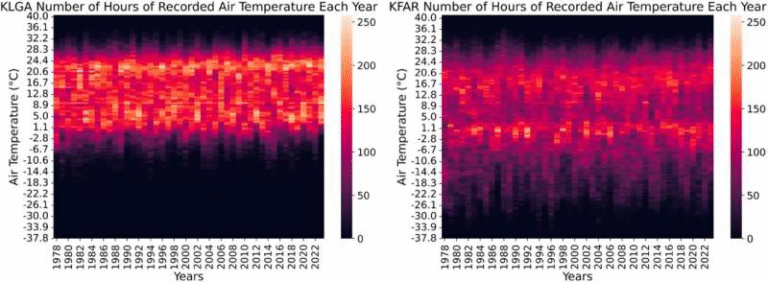Social Media Use May Be Deepening Climate Anxiety and Fueling Radical Action, Study Finds

A new research paper from the University at Buffalo (UB) suggests that spending more time on social media might be doing more than keeping people informed about climate change — it could also be heightening their climate anxiety and even shaping their views on extreme action.
The study, published in the journal Climatic Change in 2025, surveyed 1,400 adults across the United States in January 2024. Led by Dr. Holly Jean Buck, an associate professor of environment and sustainability at UB, the research team included Dr. Janet Yang, a communication professor specializing in risk perception, and Dr. Prerna Shah, a postdoctoral researcher at the University of Georgia. Their work focused on how people’s use of different social media platforms relates to their emotional responses to climate change — and what kinds of political or social actions they might support as a result.
What the Researchers Found
The findings reveal a strong correlation between social media use and two distinct forms of climate-related emotion: climate distress and climate doom.
- Climate distress refers to general worry, unease, or anxiety about the effects of climate change.
- Climate doom, on the other hand, is the belief that climate change will inevitably cause the collapse of social, political, and economic systems.
According to the study, individuals who spend more time scrolling through social media platforms report higher levels of both distress and doom. Even when controlling for factors such as age, education, income, and political ideology, the correlation remained strong.
For instance, those who used social media for several hours per day scored significantly higher on the “climate doom” scale than those who used it briefly or not at all. The researchers note that while this finding does not prove causation, the pattern is clear enough to raise serious questions about the psychological effects of constant online exposure to climate-related content.
Social Media Platforms Under the Lens
The study analyzed user behavior across seven major social media platforms: TikTok, Snapchat, Instagram, Facebook, YouTube, Reddit, and X (formerly Twitter).
Some platforms stood out more than others. TikTok and Snapchat users showed the strongest link between social media activity and climate doom, along with increased support for radical actions such as sabotage, threatening corporate leaders, or hacking fossil-fuel infrastructure.
Interestingly, the study found that neither climate doom nor climate distress had any significant connection to support for authoritarian policies, such as population control or government-enforced climate mandates. In other words, people distressed about the climate might endorse disruptive or extreme action — but not authoritarian rule.
In contrast, users of Instagram, Snapchat, Reddit, and TikTok were also more likely to express skepticism, concern about misinformation, and distrust surrounding climate information shared online. This shows that while social media can spread awareness, it also amplifies confusion and emotional polarization.
Who Is Most Affected?
The demographic breakdown offers more insight into who is feeling the most climate-related distress.
- Younger people, especially those in Gen Z and the millennial age groups, reported higher levels of both climate distress and doom.
- Women and ethnic minority respondents also showed stronger emotional reactions to climate change compared to men and white respondents.
- Those with higher education levels tended to feel more climate distress but not necessarily more doom.
- People with higher household incomes showed lower levels of climate doom, suggesting that economic stability might buffer some feelings of hopelessness.
- Political orientation also played a role — respondents identifying as Republican or conservative were less likely to express distress or doom compared to Democrats and independents.
These demographic factors suggest that the psychological impact of climate change is unevenly distributed, and social media may be intensifying those differences.
The Bigger Picture — From Anxiety to Action
One of the most striking findings from the study is the connection between climate doom and support for radical action.
Those who agreed with “doom statements” — for example, believing that society is on the verge of collapse due to climate change — were more likely to support radical or even illegal forms of activism. However, this link did not extend to authoritarian approaches, meaning that hopelessness about the climate doesn’t necessarily translate into a desire for strict government control.
Dr. Buck and her team argue that this points to an important collective dimension of climate anxiety. While much previous research has focused on mental health effects at the individual level, this study suggests that social media-fueled climate emotions could influence broader social and political behaviors.
The researchers warn that when people feel that everything is doomed, they may become either radicalized or paralyzed. Both outcomes can hinder effective climate action — one through reckless extremism, the other through hopeless disengagement.
Why Social Media Plays Such a Big Role
Social media algorithms are designed to maximize engagement, often by amplifying content that provokes strong emotional reactions — fear, anger, or outrage. When it comes to climate change, this can mean a steady stream of posts about wildfires, floods, extinction events, and political inaction.
Such exposure can heighten feelings of fear and helplessness, leading users to overestimate the immediacy or inevitability of global catastrophe. On the flip side, social media also hosts misinformation and conspiracy theories that undermine trust in climate science. This combination — alarmist content mixed with misinformation — can create an emotional rollercoaster of doom and doubt.
Platforms like TikTok and Snapchat are especially powerful in this regard because their fast-paced, highly visual formats are more immersive and emotionally charged than text-based media. This may explain why the study found stronger effects linked to those platforms.
Beyond the Study — Understanding Climate Anxiety
Climate anxiety (sometimes called eco-anxiety) is becoming a well-documented global phenomenon. The American Psychological Association (APA) describes it as a “chronic fear of environmental doom.” It’s not classified as a mental disorder but rather a form of stress response to awareness of environmental threats.
Recent surveys show that over 60% of young people worldwide feel “very worried” about climate change. Many report that these worries affect their daily functioning, mental health, and even decisions about whether to have children.
Researchers believe climate anxiety can be both motivating and debilitating. Moderate concern can lead to positive actions — like reducing one’s carbon footprint or supporting sustainable policies. However, excessive doom thinking can cause burnout, despair, or nihilism.
This is why the UB researchers stress the importance of developing healthy coping strategies — such as connecting with local climate groups, focusing on realistic actions, and taking breaks from doom-heavy media.
Why This Research Matters
The implications of this study extend far beyond social media habits. It highlights how digital communication shapes emotional and political responses to global crises. If algorithms are unintentionally fueling climate doom, platforms may need to rethink how they promote and recommend content.
For policymakers and educators, the study underscores the need for climate communication strategies that balance urgency with empowerment — helping people understand the risks without losing hope.
The findings also serve as a reminder for individuals to manage their media diets. Just as excessive exposure to violent or sensational news can affect mental health, constant doom-scrolling through climate content can warp our perception of reality.
Dr. Buck and her co-authors conclude that the next step should be studying what kinds of content cause the most harm — and how platform design can mitigate it. They call for further research into algorithmic amplification, emotional contagion online, and interventions that can help people channel their anxiety into constructive engagement.
Final Thoughts
The message from this study is clear: social media isn’t just reflecting our climate anxiety — it’s shaping it. While awareness is crucial, unfiltered exposure to the most catastrophic narratives may be amplifying fear instead of inspiring action. Understanding how digital platforms influence our emotions and attitudes toward the planet could be a key step toward building a healthier, more resilient public response to climate change.
Research Source: Social media use is associated with climate anxiety, climate doom, and support for radical action – Climatic Change (2025)





